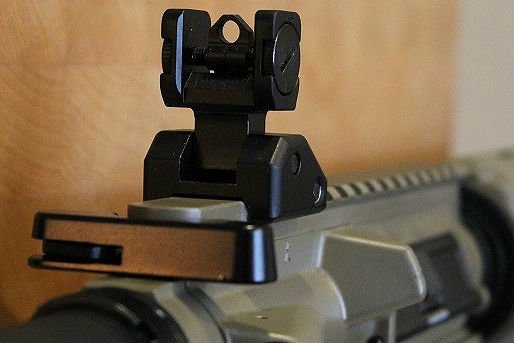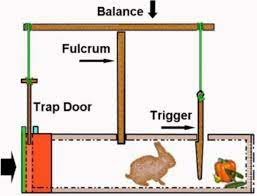5 Types of Optics Sights You Should Know
Optics sights are an important part of your weapon’s setup. They are also one of the most commonly misunderstood parts of a firearm. There are many different types of optics sights on the market today, and each has unique benefits.
In this article, we’ll discuss some of the most popular optics sights so you can better understand what’s available and what works best for your needs.
Importance of Optics Sights
Optic sights and thermal sights have become a necessity in many areas of life. Many people prefer using optics for hunting, self-defense, or target shooting. There are also many military and law enforcement personnel who use these sights to enhance their combat effectiveness.
Thermal sights can help improve your shooting accuracy. This is well documented, and a recent survey on the accuracy of pistol red dot sights concludes the same. According to the National Law Enforcement Firearms Instructors Association survey, the hit ratio of pistols mounted with red dot sights was 52%, which is higher than the national average of below 40%.
The following are some examples of why you should consider purchasing an optic sight:
- Accuracy: Optics makes it easier for you to hit your target consistently, especially at long range.
- Speed: Optics allow you to get on target faster than iron sights can because there are no distractions from your line of sight (LOS).
- Range: With proper training and practice, most people can learn how to use an optic properly without losing accuracy over longer distances.
If you are fond of hunting, it is advised to collaborate with a thermal sights manufacturer to get a wide range of purchase options. As you would read in this article, there are different types of optics sights and thermal sights. Hence, you can get the best sights at affordable rates by finding an established thermal sights manufacturer.
Red Dot Sights
A red dot sight is a sight that uses an LED or laser to project a red dot onto the target. The shooter aims the dot at the target, allowing him/her to shoot accurately from a longer distance.
Red dot sights have many advantages over other types of scopes:
- They are easy for beginners because they don’t require prior knowledge about sighting in.
- They are also lightweight and compact so that you can carry them easily.
- They are useful for hunting at night when there’s less light available for aiming and in combat conditions where there may be smoke or dust in the air due to explosions nearby.
They are beneficial in both close combat and long-distance shooting. Hence, the demand for red dot sights is growing in popularity. According to the Reports and Data market analysis, the global red dot sights market is expected to grow at a CAGR of 4.9% between 2021 and 2030.
Laser Sights
Laser sights are the most popular and versatile type of sight. Lasers have been around almost as long as optics sights have, but they’ve only recently become more common. The reason? They’re very easy to use.
And what’s not to love? Lasers are visible in all light conditions and work great in different weather conditions. Plus, they’re usually cheaper than other types of optical sights. Since there’s less technical stuff involved with using a laser sight and even no need for batteries. You can easily adjust your aim without worrying about technological malfunction.
However, lasers also have their disadvantages. One of the most significant disadvantages is the limited range of around 10-50 meters. This means that if your target is beyond this range or when you’re shooting from behind cover or concealment, you won’t see it anymore. But that’s not a significant concern if you are focusing solely on self-defense and not hunting.
Data shows that the average distance in a gunfight is usually below less. According to data from the FBI that analyzes distance from 237 gunfight incidents, around 65% of fights happened within 10 feet, which is below 31 meters. Hence, laser sights shouldn’t be a problem for self-defense guns.
Holographic Sights
Holographic sights are the most advanced optics sights. They use a laser to project a red dot onto your target, which is then reflected off of the lens and onto your eye. As with traditional iron sights, this gives you an accurate target without worrying about parallax or offset issues.
Holographic sights also have an advantage over other optics because they’re more durable than their counterparts. While they are more expensive than other types of optics sights, they’re also generally easier to use because you don’t have to focus on anything but looking through the red dot itself. Just put it on the target and fire.
Reflex Sights
Reflex sights are the most common type of optic sight. They have a large, illuminated reticle that can be seen in bright and low light conditions. Reflex sights are incredible for close-range shooting but don’t work well for long-range shooting. The reason is that the eye relief distance is short, making it impossible to use these sights with magnified optics.
The history of reflex sights dates back to 1975, when Aimpoint launched its electronic Reflex Sight. It gets its name because this sight reflects the part of light through a layer of glass for projection. With technical advances, the accuracy of reflex sights has only grown to become better.
Prism Scopes
While prism scopes are not as common as other types, they are used for long-range shooting. Prism scopes have a high level of magnification, and the reticle is located at the bottom of the scope to make it easier to see through dense brush. However, they are more expensive than other types of scopes.
Aside from that, there’s little to know about prism scopes. They’re pretty straightforward. They’re also simple, easy to use, and show you what you need to see when you’re out in nature.
Conclusion
At the end of the day, it comes down to personal preference and how much you like a particular model. If you’re looking for something easy to use and gives you more precision when aiming, I suggest starting with a red dot sight. They’re perfect for beginners and experienced shooters alike because they offer quick target acquisition capabilities while also being able to zero in on long-distance targets.







